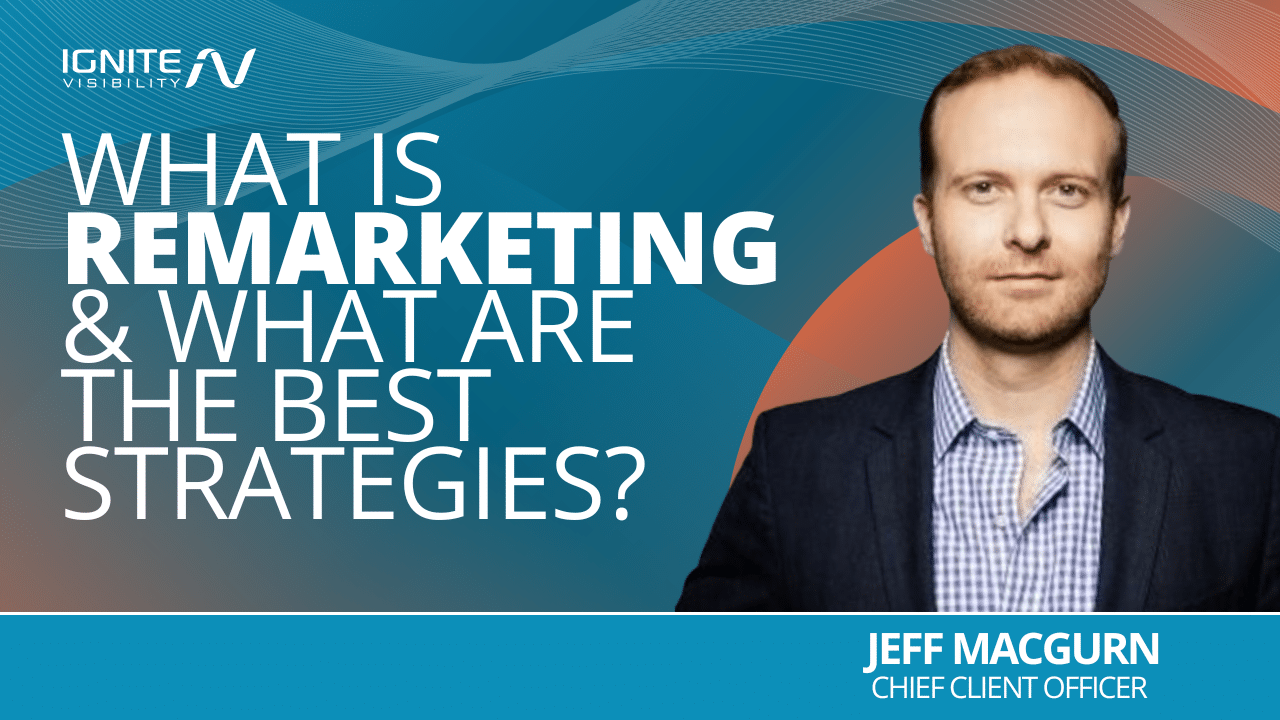
Once people convert to customers, it’s important to bring those people back as much as possible. Re-engaging your existing customers could keep you at the forefront of your audience’s mind and, if they’re consistently interested in your offerings, increase the likelihood of repeat sales.
In this blog, Chief Client Officer, Jeff Macgurn, will discuss the best remarketing strategies to help you boost conversions and retain more customers.
What You’ll Learn:
- Understanding Remarketing and Retargeting
- Developing Effective Remarketing Strategies
- Advanced Remarketing Techniques
- Remarketing Platforms and Tools
- Real-World Remarketing Examples
My Expert Opinion on Remarketing Strategies
If you want to get the most from your current customer base, you need to consistently reconnect with customers and encourage them to come back, whether it’s through personalized product recommendations or emails with exclusive offers.
Enter remarketing, one of the essentials in recapturing audiences to maximize engagement.
One of the reasons remarketing is so important is the cost of customer retention vs. acquisition. Generally, it costs a lot more to acquire a new customer than to retain an existing one, with the cost of acquisition often up to five times more than the cost of retention.
Also, you have up to a 60% to 70% chance of selling to an existing customer, whereas that percentage is far lower at 5% to 20% for new customers.
This is just the tip of the statistical iceberg, showing how important it is to remarket to your audiences.
Remarketing will help you establish and maintain a strong connection with new and longtime customers as you work to keep them coming back, maximizing customer lifetime value (CLTV).
So, what is remarketing, and how can you implement it? Let’s look into remarketing vs. retargeting, along with some beginner to advanced remarketing strategies and some remarketing examples showing these efforts at work.
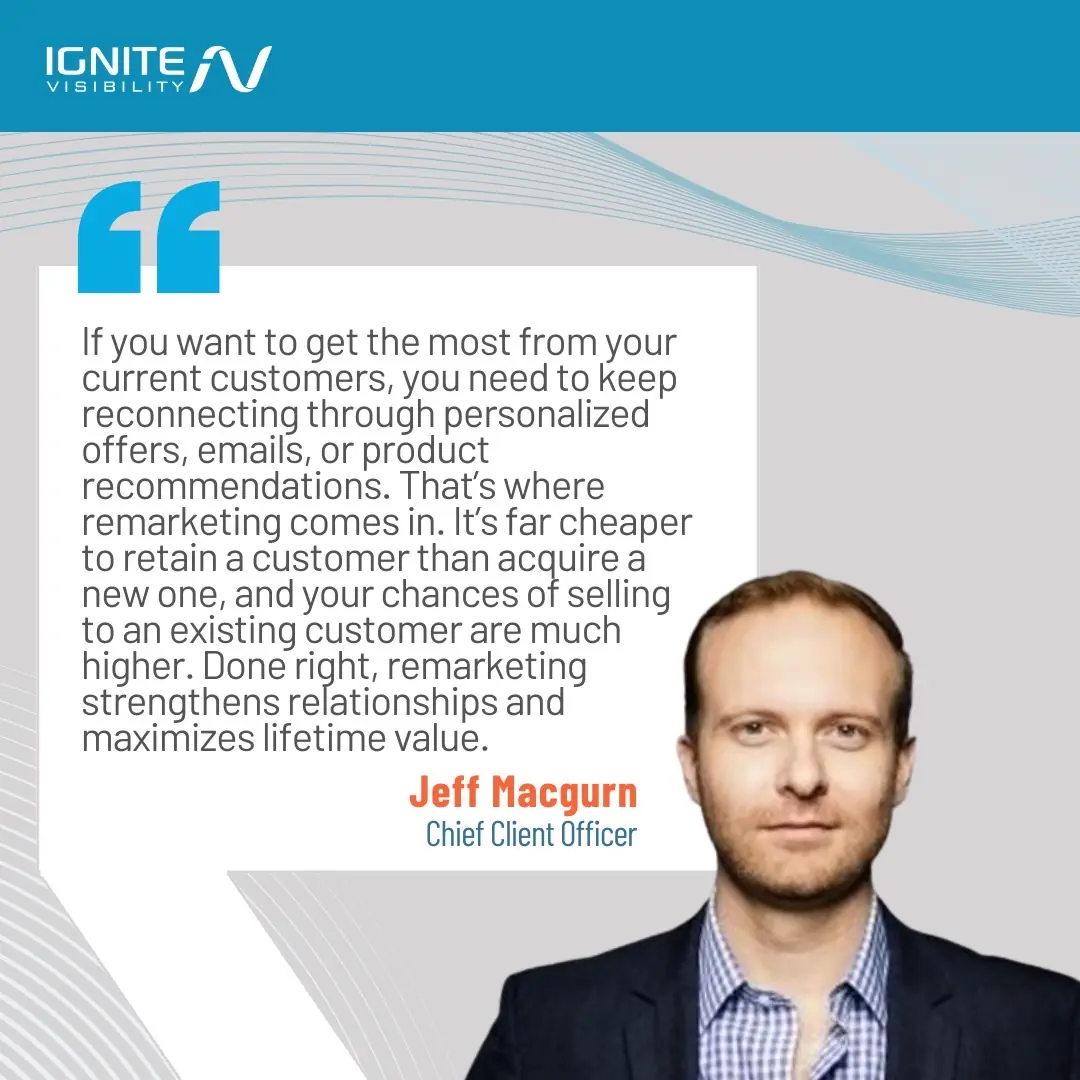
Understanding Remarketing and Retargeting
What is remarketing, exactly? To get a better understanding of this type of marketing, it’s important to know the difference between remarketing vs. retargeting.
What Is Remarketing?
Remarketing is a specific type of marketing that involves trying to re-engage and sell to existing customers who have done business with you in the past. It can also target people who’ve submitted contact information to your brand without actually following through on a purchase, or it may help with upselling efforts.
When you remarket to somebody, you’re trying to maximize retention and get the most from a customer through repeat sales.
While the primary remarketing place is email, which uses personalized product recommendations and discounts or other offers, many remarketing strategies also use SMS text messages, push notifications, ads and other direct methods of communication to keep customers returning.
Some remarketing examples include:
- Emails sending personalized product recommendations based on previous purchases
- Push notifications reminding customers to complete an order with items in a shopping cart
- SMS texts encouraging customers to take another action to move them toward a sale
What Is Retargeting?
Where remarketing looks to engage existing customers, retargeting is all about trying to convert people who’ve expressed interest in your offerings or brand without making a purchase or getting in touch.
These campaigns would aim to drive more conversions by following people who have visited your website over to others using cookies, pushing relevant ads on various platforms to encourage people to return to your site.
Retargeting primarily uses ads to target prospective customers across the web after interacting with your website or social media content.
Here are a few retargeting examples:
- Ads for products that a person has viewed on a website
- Ads for a product within a person’s shopping cart
- Ads reminding shoppers to return for a discount on first orders
Ultimately, using both remarketing and retargeting can help you connect with people interested in your company and offerings, leading to more conversions.
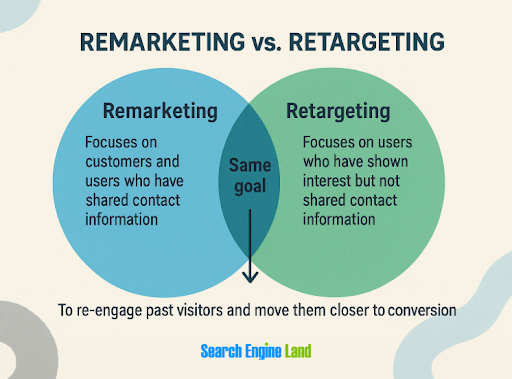
Developing Effective Remarketing Strategies
To develop strong remarketing campaigns, there are a few key elements to consider, including:
Segmentation
One of the first steps to take to inform your remarketing efforts is audience segmentation, which can help target emails and other content more directly to specific types of people in your audience.
This process involves conducting some in-depth market research into your audience to break it up into different subgroups, which you can define using audience personas that give each segment a unique personality, based on demographics, psychographics, buying behaviors, and other data.
For instance, an ecommerce brand might have products that are targeted more toward parents, leading the brand to develop a campaign recommending children’s toys, parental assistance tools, and other products that a parent would find appealing.
Meanwhile, a restaurant franchise might want to target college students looking to save money, with student-centric campaigns promoting meal deals specifically for this segment.
Personalization
What is remarketing without personalized messaging to build a stronger connection?
Once you have your audience segmented, you can use your personas to instruct personalization of messaging and visuals in emails and other marketing content.
Personalized emails have a much better chance of resonating with recipients and leading them to not only open them but also click through to complete the next course of action.
Be sure to personalize both the subject line and the body of your emails, addressing customers by name when appropriate and bringing up past purchases or interests.
Also, don’t forget about A/B testing, which is one of the best ways to develop a winning remarketing strategy. For example, you might run two versions of the same email with slightly different subject lines, seeing which gets the highest open rate.
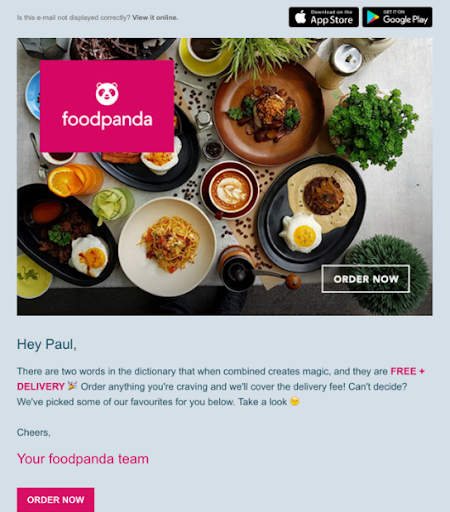
Timing and Frequency
You must also consider the timing and frequency of your campaigns to drive the most engagement.
Think about when your audiences are most active. You might have better luck reaching busy urban professionals in the morning or evening during their commute, for example, along with the weekends.
The key here is to balance effective engagement without annoying your audiences. You don’t want your customers to forget about you, but you also don’t want to turn them away from you.
In determining how often to send promotional emails and other content, take a look at your competitors to see what works, and find out when your audience segments are most likely to check their inboxes.
Advanced Remarketing Techniques
There are multiple advanced remarketing strategies you could use to effectively remarket to your audiences. Some of these strategies include:
Cross-Device Tracking
One of the most essential advanced remarketing strategies involves tracking the user experience across devices.
All of your marketing emails and other content should offer a seamless experience for the user, determining how people engage with your brand along the way.
You may discover that people are interacting more with your emails on desktops, for example, potentially inspiring you to use more push notifications and SMS messages to engage mobile users.
AI-Driven Personalization
You could also use AI and machine learning to build stronger connections with audiences through personalization.
More specifically, AI could assist you in creating dynamic content for ads and emails, maximizing relevance based on user interests, behaviors, and other characteristics.
An example here could be an AI content creation tool that allows you to input three different descriptions and headers for ads, enabling the tool to select the most appropriate option based on the specific audience. AI could also modify your descriptions for more personalization, such as by recommending a particular product in a more direct way.
AI could also use predictive analytics to help you determine how best to develop your ads to hit their target with precision.
Remarketing Platforms and Tools
Here are some remarketing solutions you can use to achieve the best possible results with your advanced remarketing strategies:
- Google Ads: One great tool you can use is Google Ads, which makes it easy to develop personalized ads that reach audiences across the Google Search and Display Network. Using this platform, you can create audience lists for easy segmentation, develop Google Ads campaigns geared toward each segment, and ultimately increase conversions with precise targeting. Best practices on this platform include setting a specific bidding strategy and setting a frequency cap to prevent ad fatigue.
- Facebook Ads: Another great solution you can use is Facebook Ads, which can help you target ads on both Facebook and Instagram, along with Messenger and the Audience Network. It’s a particularly helpful tool for segmenting audiences and customizing ads to reach people on social media, supplementing Google Ads and other platforms.
- AdRoll: For both retargeting and remarketing, you can use AdRoll for cross-platform management and AI-driven ad targeting. This tool is ideal for small to medium-sized businesses in need of an ad solution with a great interface and transparent pricing.
- Criteo: An alternative to AdRoll, Criteo is another great option for cross-platform campaigns and AI-powered advertising. However, this solution is best for large ecommerce companies requiring more dynamic remarketing and retargeting with a bit of a higher price point.
Real-World Remarketing Examples
What is remarketing like in practice? Let’s take a look at some examples across a few key industries:
Ecommerce
One industry that often uses remarketing to reconnect with customers is ecommerce, which often sees a problem with abandoned carts that come very close to concluding with a sale.
To combat this issue, ecommerce brands are getting more creative with their cart abandonment emails.
Just take a look at this one from Everlane, which not only sends a friendly reminder to complete a purchase but also includes a product image, name, and description to remind the recipient precisely of what they were about to buy.
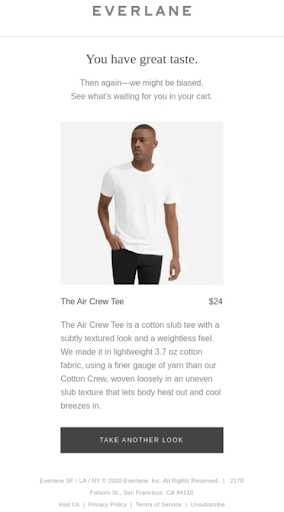
Another great example is Rudy’s, which includes product images and pricing as well as a reminder to use a promo code to get free shipping during checkout.
The top of the email also creates a sense of urgency by indicating that the free shipping offer is about to expire.
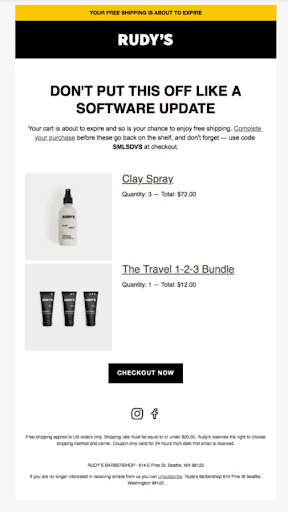
The Service Industry
Another industry that can make good use of remarketing content is the service industry, which can use remarketing emails to send everything from appointment reminders to promotions for various service offerings.
One example comes from Yapi, showing how a dental practice could send patients the following email reminder once they’ve scheduled an appointment.
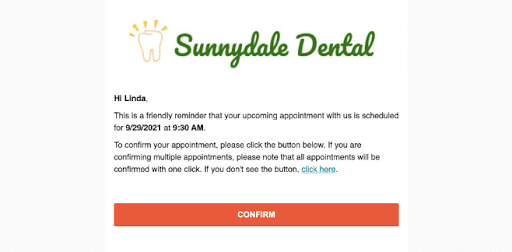
In addition, this practice could use Yapi to send SMS text message reminders, complete with a link to a confirmation page.
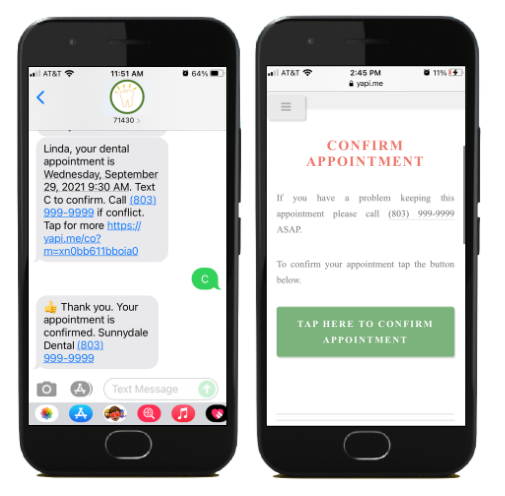
SaaS
Software-as-a-Service (SaaS) companies can benefit just as much from remarketing, especially when it comes to re-engaging trial users and upselling.
One great example of remarketing at work in this industry comes from Buffer, which has used upsell emails to try and get its users to pay for a better plan to access new and exciting features.
Specifically, Buffer used an email to highlight a new advanced feature that would help save more time, with a link to upgrade to the Essentials plan to access it.
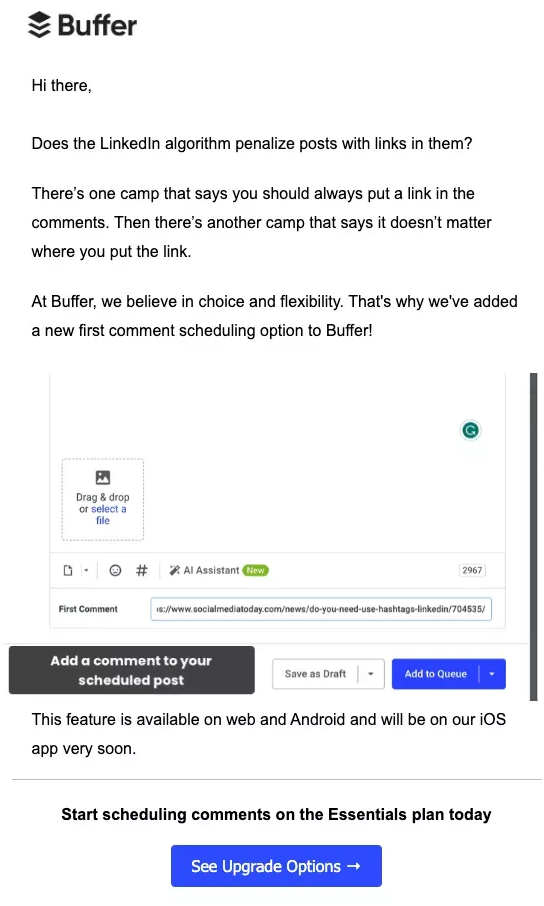
Meanwhile, Typeform offers its users a discount to pay for its form and survey creation software after abandonment, working to win them back.
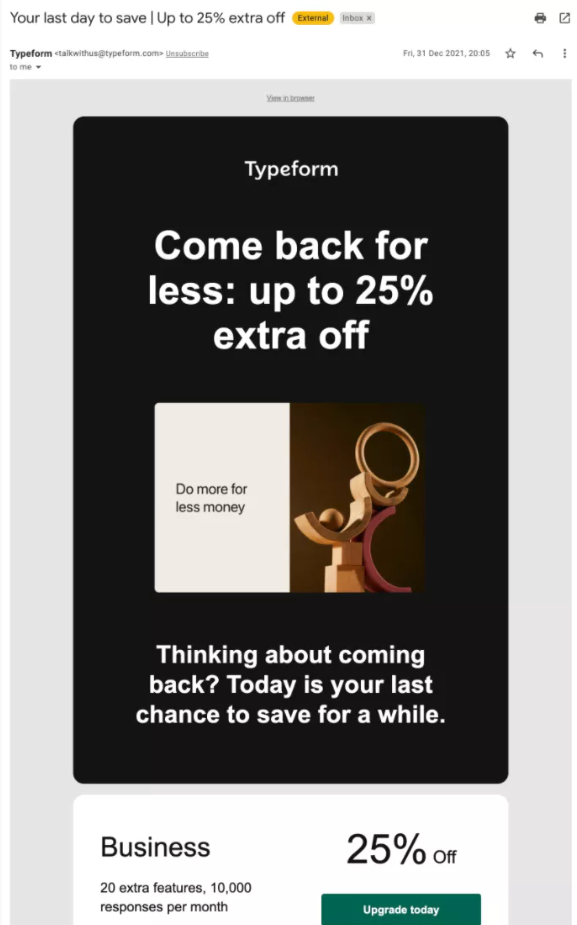
Advanced Remarketing Services From Ignite Visibility
Need some assistance with your remarketing efforts? Ignite Visibility can help with solutions that work specifically for your brand. We’ll help you reconnect with customers to boost conversions and keep customers consistently engaged.
With our advanced remarketing services, you can benefit from:
- Audience segmentation to help with personalization of emails and other content
- Help with developing personalized email content
- Cross-device management for a consistent experience across platforms
- Properly timed engagement to reach your audiences at the right time
- Retargeting ads to supplement remarketing efforts
- And more!
Like this idea? Get started with a free proposal today and find out what we can do for you.

